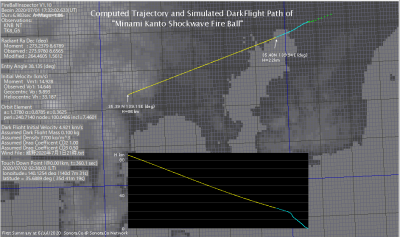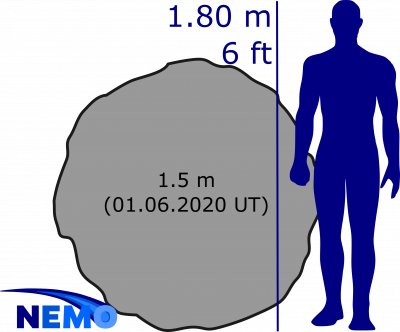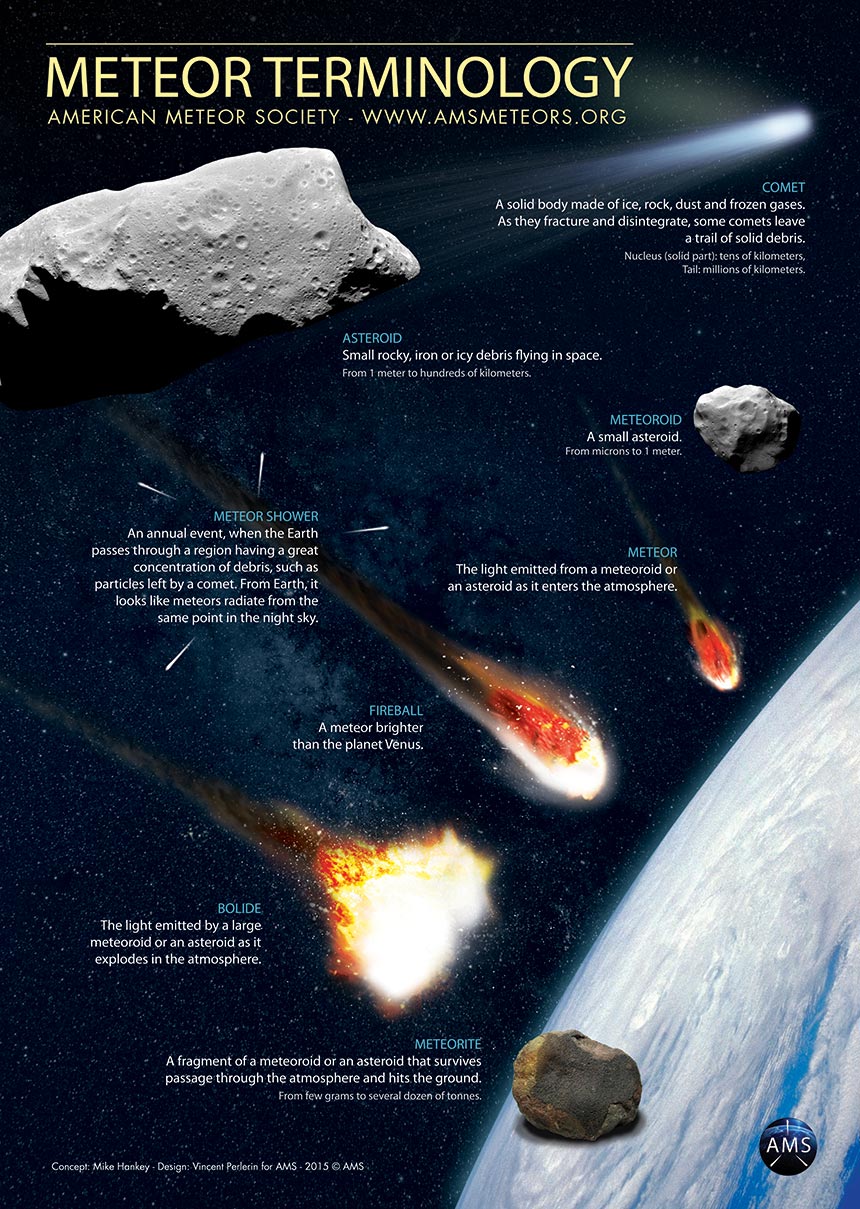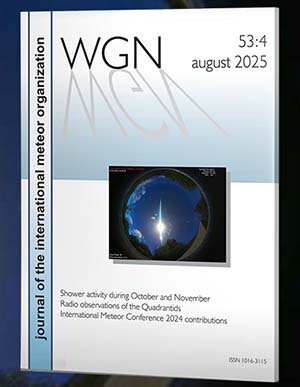Early risers in Tokyo were able to spot a bright fireball event on 2 July 2020. It was visible from a large part of the Kanto region in Japan. The event occurred around 02:32 JST, or 17:32 UTC on 1 July 2020. Although the fireball was only visible for a few seconds, there are videos of the event that cause a lot of chatter in Social Media. There are even reports of a related sonic boom! Following a Tweet by Nobuyuki Kawai the fireball was also caught from the Akeno Observatory, Tokyo Institute of Technology.
私たちの東工大MITSuME望遠鏡サイト(山梨県北杜市東大宇宙線研究所明野観測所)の全天モニターカメラにも写っていました。 pic.twitter.com/Y1kzCYC0aO
— Nobuyuki Kawai (@NobuKawai) July 1, 2020
Furthermore, the fireball was observed by the SonatoCo Network. They were able to compute the trajectory of the entering object, its orbit, and to simulate its dark flight. Following their calculations the fireball had a duration of almost 7 s and an entry angle of about 38°. Its velocity was computed to be about 15 km/s. The orbital elements are: a = 1.378, q = 0.8785, e = 0.365, peri = 240.7140, node = 100.0486, incl. = 7.4601.

The extraterrestrial object that entered the Earth’s atmosphere could also be measured by infrasound. One station of the International Monitoring System of the Comprehensive Nuclear-Test-Ban Treaty Organisation was almost 1150 km away from the event but in its waveforms a signature of the fireball could be identified.
We were able to calculate a source energy of the entering asteroid of about 150 t TNT. With the velocity of 15 km/s computed by SonatoCo and an assumed density of 3000 kg/m3 the size would be around 1.5 m diameter, with a mass of about 5.5 t!

AMS/IMO has no witness reports so far. Let’s change that!
If you witnessed one of these event and/or if you have a video or a photo of this event, please
Submit an Official Fireball Report
(available in 36 languages)
Update
Two meteorites were recoverd in the area calculated by SonatoCo! As reported to IAU issues CBAT 4810. Following their report, the fireball that appeared over the south Kanto region in Japan on 1. July 2020 was brighter than the full moon. The entering object was observed by five cameras of the SonotaCo network and by different video security cameras. A sonic boom could be heard over a large region and detected with infrasound. Lines that are typical for stony meteorites could be seen in a recorded spectrum.
The trajectory and strewn field as computed by SonatoCo were distributed on the internet and two days after the event were even shown on TV. Directly on 3. July the first meteorite was found. On July 4 the same citizen found a second meteorite. The person lives in the region of the strewn field calculated by SonatoCo, in Narashino city and found them “in front of a door of the citizen’s residence and in its gareden [sic]”.
The two meteorites have masses of 63 g and 70 g and are currently in the National Museum of Nature and Science in Tokyo for analysis. It is assumed that both meteorites do not represent the main mass of the entering object. Following, more meteorite recoveries are quite possible.
Furthermore, the heliocentric orbital elements were updated: a = 1.44 +/- 0.13 AU, q = 0.865 +/- 0.031 AU, e = 0.401 +/- 0.07, Peri. = 241.30 +/- 3.1 °, Node = 100.0 +/- 0.0 °, i = 7.8 +/- 2.1 °.
Based on these orbital elements they suggested three parent body candidates: the minor planets 2020 LT1, 2008 WH96, and 2019 NP1.
If you want to learn more about Fireballs: read our Fireball FAQ.





 You saw something bright and fast? Like a huge shooting star? Report it: it may be a fireball.
You saw something bright and fast? Like a huge shooting star? Report it: it may be a fireball.  You counted meteors last night? Share your results with us!
You counted meteors last night? Share your results with us!  You took a photo of a meteor or fireball? You have a screenshot of your cam? Share it with us!
You took a photo of a meteor or fireball? You have a screenshot of your cam? Share it with us!  You caught a meteor or fireball on video? Share your video with us!
You caught a meteor or fireball on video? Share your video with us!